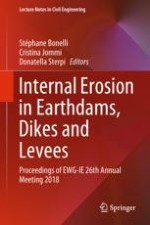This book gathers the peer-reviewed contributions presented at the 26th Annual Meeting of the European Working Group on Internal Erosion in Embankment Dams, Levees and Dikes, and their Foundations (EWG-IE), held in Milano, Italy, on 10-13 September 2018. The meeting served as a fertile platform for discussion, sharing sound knowledge and introducing novel ideas on issues related to soil internal erosion in water retaining structures. The contributions encompass various aspects of laboratory techniques and findings, modelling and design criteria as well as prevention measures and field assessment. The book is a valuable, up-to-date tool that provides an essential overview of the subject for scientists and practitioners alike, and inspires further investigations and research.
